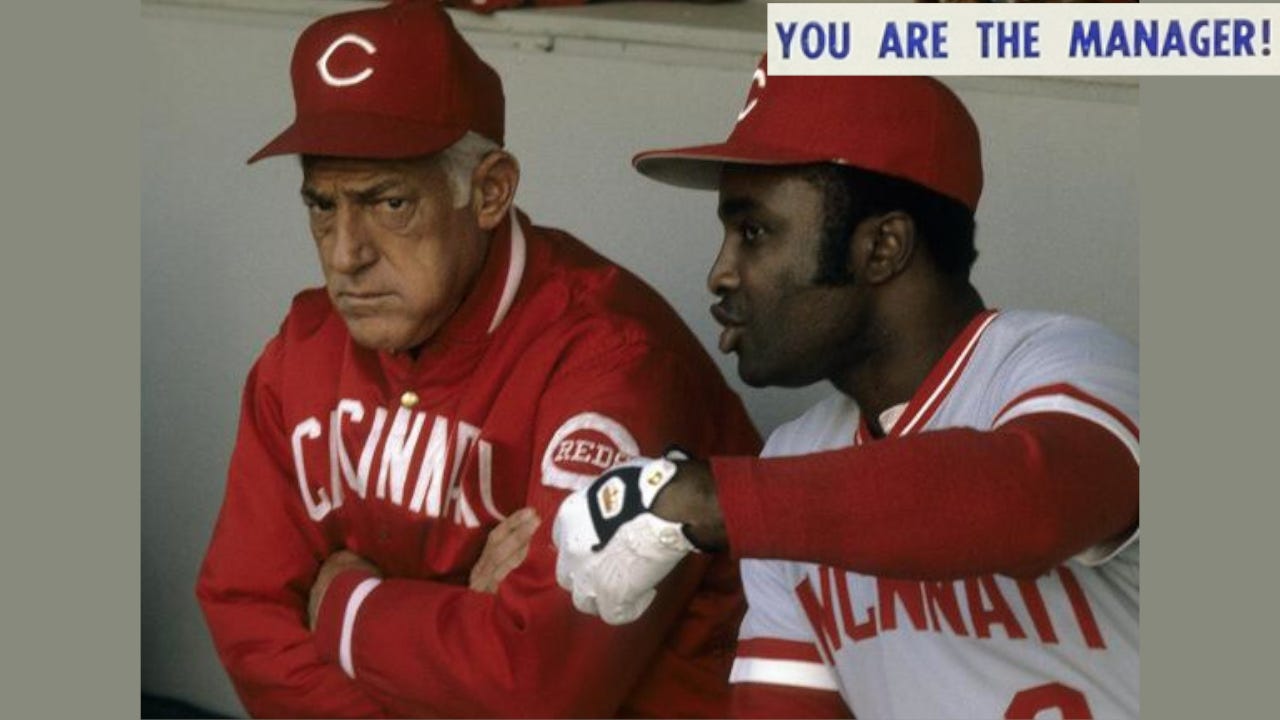To Walk Or Not To Walk
The question here is pretty simple. Did Sparky Anderson do the right thing?
Let’s go back to September 19, 1978. The Reds were trailing the Dodgers, and needed to win as many as possible during this series in Los Angeles.
Cincinnati starting pitcher Fred Norman had a rough go at the start of the game:
That brought up Ron Cey, with runners on second and third and Los Angeles up by 1.
Anderson decided to walk him to load the bases.
Was that the right decision?
Norman got Joe Ferguson to foul out. But then this happened:
And that’s where the question comes in. Did Sparky make the right call?
Interestingly enough, Anderson and the Reds wound up issuing a whopping 4 intentional walks in this game. The Dodgers demolished the Reds, in part because Norman didn’t get a single man out in the bottom of the 2nd before being taken out.
And, of course, the Dodgers won the NL West that year.
But would things have been different if Cincinnati hadn’t given Los Angeles a free base runner? What do you think?
Comments are open to all for this post.








In my opinion, when a batter who was ntentionally walked scores, the strategy has failed. In this case the first intentional walk to Ron Cey failed to get Sparky's objective which was a double-play ground ball from a slow running catcher, Joe Ferguson. But Cey didn't score. Push.
The second intentional walk may be an easy decision for some. Walking the number eight hitter to get to the pitcher. However, in this case the pitcher, Rick Rhoden, was a pretty good hitter, winner of three silver slugger awards. Sparky took a chance, and again he didn't get burned. Push.
Neither of the two intentional walks led to additional runs.